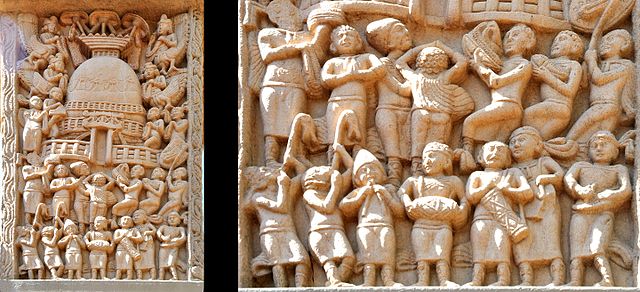Overtone singing, also known as overtone chanting, harmonic singing, polyphonic overtone singing, or diphonic singing, is a set of singing techniques in which the vocalist manipulates the resonances of the vocal tract to arouse the perception of additional separate notes beyond the fundamental frequency that is being produced.
Chirgilchin performing various styles of Tuvan throat singing.
Buddhist music is music created for or inspired by Buddhism and includes numerous ritual and non-ritual musical forms. As a Buddhist art form, music has been used by Buddhists since the time of early Buddhism, as attested by artistic depictions in Indian sites like Sanchi. While certain early Buddhist sources contain negative attitudes to music, Mahayana sources tend to be much more positive to music, seeing it as a suitable offering to the Buddhas and as a skillful means to bring sentient beings to Buddhism.
Relief of musicians from Sanchi
Tibetan illustration of Saraswati holding a veena, the main deity of music and musicians in Mahayana Buddhism
A musical ensemble with flute and an ancient Indian vina, from Amaravati
A relief depicting musicians at Chakhil-i-Ghoundi Stupa, Hadda, Afghanistan, 1st–2nd century CE





